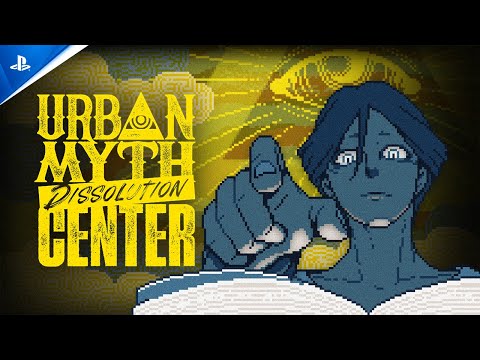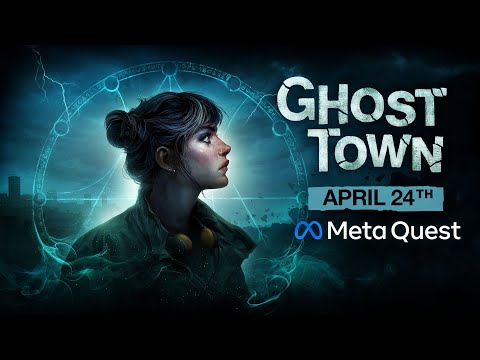A stylish but slow-paced mystery anthology that’s just a little too sluggish for its own good.
Urban Myth Dissolution Center sits at that awkward junction between enthralling detective game and slightly tedious visual novel. On the face of it, it looks and behaves much like Capcom’s Ace Attorney games, though more in the vein of the Miles Edgeworth Investigations duo than Phoenix Wright and Apollo Justice. There are six cases to solve here, and you’ll do so through a mixture of 2D point and click investigation work, social media rumourmongering, and some Case of the Golden Idol-style blank-filling to draw your conclusions together.
Urban Myth Dissolution Center review
- Developer: Hakababunko
- Publisher: Shueisha Games
- Platform: Played on PC
- Availability: Out on 12th February on PC (Steam), PS5 and Nintendo Switch
Unlike its legal thriller stablemates, however, there are no crimes sitting at the heart of these mysteries, nor are there any real villains that need to be brought to justice via your superior deduction powers. Rather, the cases you’re investigating here are all strange stories of paranormal phenomena – occult tales that are, perhaps, disappointingly more Western-leaning than you might expect considering its contemporary Japanese setting, not to mention quite tame and sanitised versions of them compared to the more overt horror fare found in similar games like Paranormasight: The Seven Mysteries of Honjo. If you’re expecting a tour through Japan’s library of urban folktale here, you’re going to feel short-changed, as these stories of scary figures suddenly appearing from under the bed, doppelgangers causing mayhem and possible paths to the underworld can feel all too familiar at times, and a little too ‘children’s bedtime story’ in tone, to really get the blood pumping.
Urban Myth Dissolution Center – Announcement Trailer | PS5 Games
There are still some highlights to enjoy along the way. Cases that involve a dubious box that supposedly curses everyone who comes into contact with it, and a haunted apartment where vengeful ghosts lurk and are caught on camera are perhaps the closest it comes to feeling like you’re in a Japanese horror flick. Likewise, there’s an overarching plot rumbling away in the background that had a whiff of The World Ends with You about it. However, if it’s a purer kind of spooky, Japanese crime story you’re after, you’d probably be better off casting an eye over developer Hakababunko’s previous work, the excellent Makoto Wakaido’s Case Files Trilogy, which plays on the minutiae of Japanese myths and traditions much more effectively than it does here.
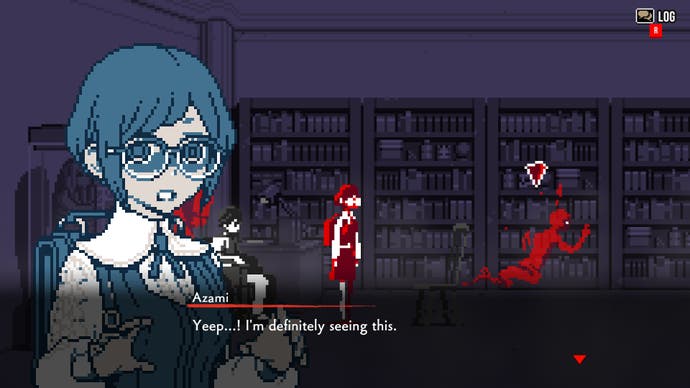
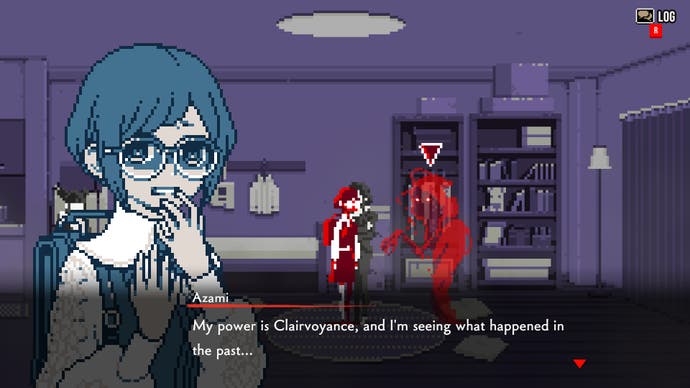
When Azami dons her glasses, her power of clairvoyance comes into focus, allowing her to see ghostly traces of past events. Sometimes they’re very clear figures of certain characters, but they can also take more interesting, abstract forms to signify certain events, such as a large eyeball signifying a photo being taken. It keeps these spirits feeling otherworldly, without always being literal ghosts. | Image credit: Eurogamer/Shueisha Games
Still, even if you’re on board with the subject matter of these myths, the biggest hurdle standing in the way of this becoming a stone-cold detective classic is the game’s somewhat glacial pacing. With the exception of its third and middle case – a memorable night-time mystery tour through Tokyo’s Ueno Park that has a much heavier focus on riddles and puzzle-solving compared to the rest – each case takes place over multiple days, and the events surrounding each paranormal entity will gradually ramp up during the time you investigate. On the one hand, this gradual unravelling of events keeps you on your toes. Since each case is ongoing, you never quite know where you’re going to end up by the time it’s over, and its conclusions can regularly feel quite surprising as a result – even if it does have a somewhat bad habit of simply explaining the solution to you, rather than letting you work it out for yourself.
But this piecemeal approach also has its downsides, as the protracted nature of each case means there’s often precious little to actually investigate during each timeframe. What’s more, the limited canvas of suspects and environments you’re working with means you’re constantly combing through the same handful of objects and interaction points as you did on previous days. The longer a case goes on, the more repetitive it starts to feel, and the rate at which revelations come is often slow and buried under mountains of busywork.
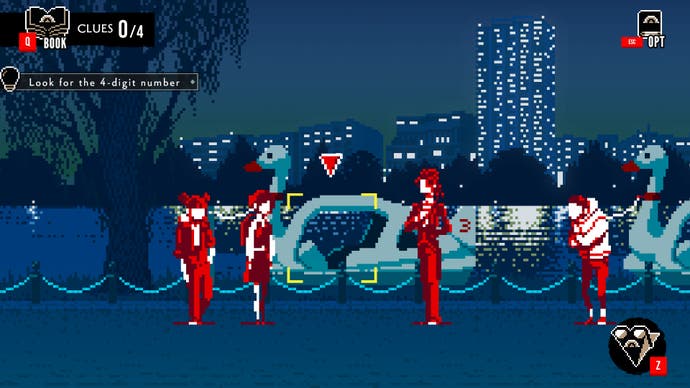
The third case that takes place over the course of a night-time mystery tour is easily the best one of the lot. | Image credit: Eurogamer/Shueisha Games
There’s a lot to pick through here, as much like Makoto Wakaido, clues and further lines of enquiry will only reveal themselves in a person or object’s dialogue tree once you’ve worked through its nested warrens of preceding options. You might ‘Observe’ a suspicious shelf, for example, which will prompt your naïve but clairvoyantly gifted heroine Azami to think, ‘Hey, I better go and ask so-and-so about this,’ who’ll then reveal a further detail about it, prompting a return to said shelf to ‘Look Closer’ at it and so on and so forth. Add to this Azami’s ability to view the world through her clairvoyance powers, where ghostly traces of the past linger to reveal further clues about what happened, and the number of puzzle pieces you’re juggling only grows even further.
It’s a similar approach to Famicom Detective Club and Emio: The Smiling Man in that sense, albeit with a much heavier guiding hand through its various conversations. While there’s a lot of to-ing and fro-ing between different objects and people in Urban Myth Dissolution Center, there’s none of that frustrating chucking a list of verbs at the wall to see which one unlocks the next plot point if you happen to get stuck. Rather, every new talking point is always clearly highlighted here, providing a clean and clear path through each case’s twists and turns. Likewise, once you’ve gathered all the requisite clues in a scene, you can trigger Azami’s thinking sequence, where you’ll need to fill in some relatively obvious blanks to push the plot forward.
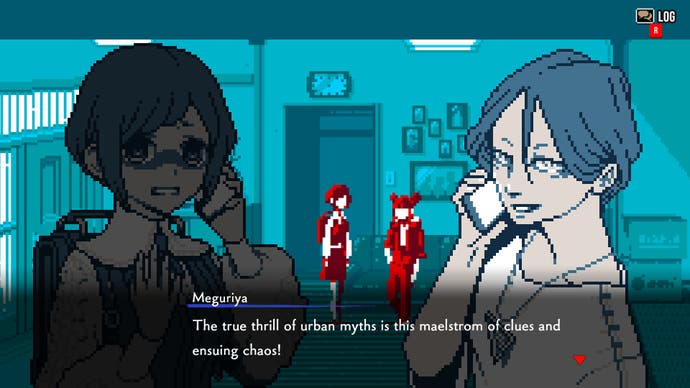
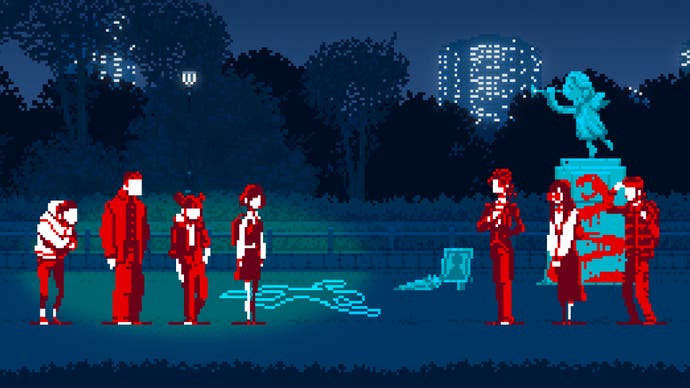
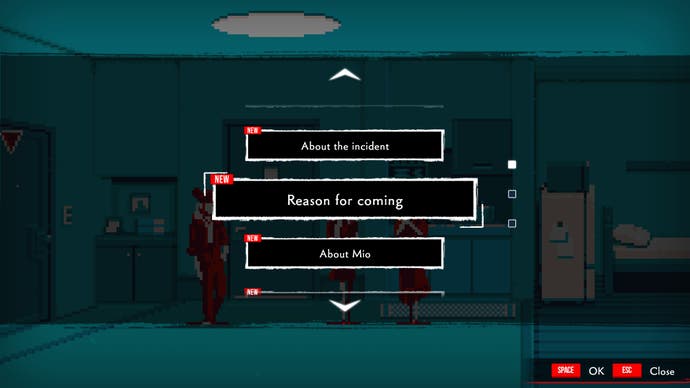
Your Director (above, left) will always call at critical moments to help move the story forward, but before that happens, new text options are always flagged up (bottom, centre) to help direct you toward the next clue. | Image credit: Eurogamer/Shueisha Games
The game does its best to liven up these investigations by also having Azami take to social media sometimes, firstly to bolster her understanding of what’s going on, but mostly to try and track down the origin of these myths and rumours online. These are presented as posts and replies on a Twitter-like in-game social network, and Hakababunko go to extraordinary lengths to provide Azami and her driver-cum-back-up pal Jasmine with bespoke responses to each individual post. It makes trawling through them that much more enjoyable and responsive, and it mimics that mad spiral of falling down a Wikipedia rabbit hole with surprising accuracy. Azami can also use her clairvoyance power to identify suspicious keywords in these sections to help propel her search even further, and combining these search terms (however vague) to narrow in on each event feels like a refreshingly modern take on interactive sleuthing.
Once again, though, it’s the pacing of these segments that begins to drag. You’ll often need to go through three rounds of social media research during any given case, and the logic behind what counts as a viable clue versus what’s just deemed online nonsense is suspect, to say the least. I’ll admit, I began to dread these sections because I just wanted to get on with the story at hand, and the delight of their novel approach and artful presentation quickly wore off as the game went on.
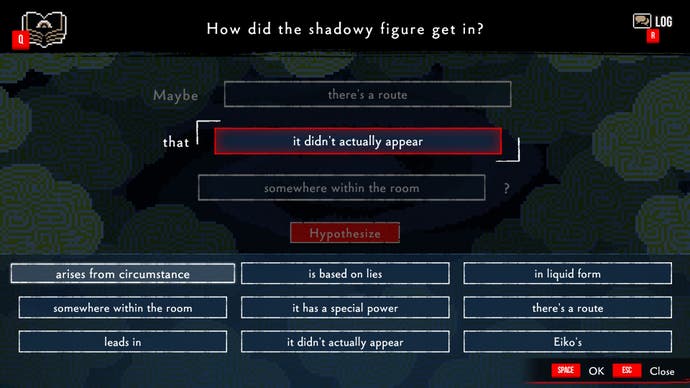
Once all clues are gathered, Azami will try and put events in order to figure out what happened. It falls into the same trap as The Case of the Golden Idol, though, in that they’re very easy to backward engineer or brute-force based on the sentence structure. | Image credit: Eurogamer/Shueisha Games
Everything just takes a bit too long to come to the surface in Urban Myth Dissolution Center, and even when it does, you’re sometimes left wondering what it was all for. Azami’s job, after all, is to simply identify which urban legend correlates to each respective event, before revealing the truth of it via its titular ‘dissolution’ process – a series of effectively four questions that test your knowledge of everything you’ve just witnessed. If anyone is to blame in these mysterious goings on, that’s for someone else to go and sort out – as Jasmine makes plain at the end of the very first case.
It’s a setup that can leave you feeling strangely deflated by the time you reach a case’s conclusion – though I will say that for all its dalliances and loose-ends, Hakababunko does eventually bring them all together again for an absolutely killer ending that really delivers on everything that’s come before it. It’s a great climax that almost wiped away every lingering disappointment I had with the game, and my overall impression of it now is that it was more than worth persisting with – even if it did take the best part of 12 hours to get there.
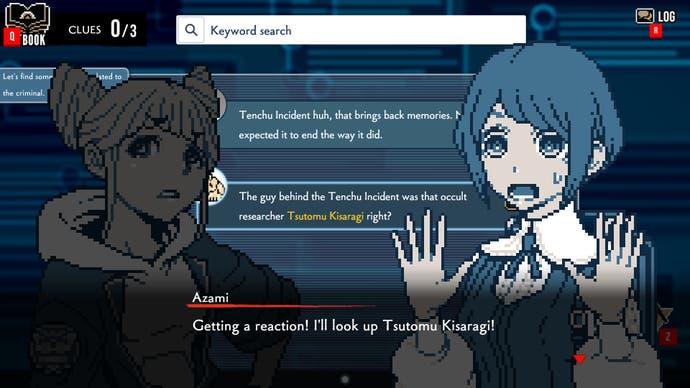
The social media research sections are, in theory, great palette cleansers from the main investigation segments, but the sheer quantity of them makes each case start to drag a bit. | Image credit: Eurogamer/Shueisha Games
Urban Myth Dissolution Center accessibility options
Separate volume sliders for music, sound effects and dialogue sounds. Controller vibration slider. Multiple text language options.
There’s also no denying that Urban Myth Dissolution Center’s visual presentation is stunning throughout. Characterful and fidgety pixel art portraits help to convey buckets of personality for each of its shifty cast members, and its stark use of colour works exceptionally hard to give each case a striking and otherworldly feel to it. Everyday scenes are cast in varying shades of white and blue, but these calm and soothing dioramas are violently interrupted by its scarlet ghouls, ghosts and main characters, instantly drawing your eye and making you stand to attention. It’s a clear step up from Makoto Wakaido, both in terms of detail and the overall ambition of each scene’s composition – though the sad lack of any colour-blind options in the settings menu means not everyone will be able to fully appreciate the impact of what it’s going for.
The mysteries, too, are competently told, even if they are a bit long and overly protracted in the way you go about investigating them. I was always eager to see what lay at the heart of these weird and wonderful tales, and I enjoyed how they gradually grew in scale and complexity, despite the game’s somewhat slow beginnings. For all its faults, I think fans of detective-themed visual novels will still find something to like here, even if it takes a bit of elbow-grease and perseverance to peel back its stubborn exterior. I still reckon Makoto Wakaido is the more gripping of Hakababunko’s two games, but this studio is clearly one to watch for people who love this stuff, and I hope its next game can strike a more confident balance between thrilling mystery caper and snappy deduction work.
A copy of Urban Myth Dissolution Center was provided for review by publisher Shueisha Games.

